Rivers at Risk in Guatemala
Across the northern indigenous hinterlands of Guatemala people are up in arms. You may have heard about it. They are up in arms over the companies involved in damming and mining—particularly hydroelectric projects; over their questionable business practices; deficit of environmental concern; and lack of respect for community well-being and consent, putting rivers at risk.
Incidents both positive and negative continue to play out. In Alta Verapaz, the 195 communities in the Cahabón municipality have been organizing against the Oxec I & II projects for the past year. On Jan. 12, they self-financed a movement of 85 truckloads of villagers to Cobán to demand justice and a “good faith” referendum.
In Huehuetenango, the companies’ response has been violent. On Jan. 17, a 72-year-old man was shot when peacefully protesting the Ixquisís project. And in Quiché, residents of the Río Copón area are continuing the longest-running, anti-dam resistance movement in the country, being vehemently opposed to the Xalalá project just downstream on Guatemala’s biggest river, the Chixoy.
This project, first conceived in the 1970s and enjoying strong government support again starting in the 2000s, would gravely affect 58 Q’eqchi’ communities and have severe environmental impacts.
In late 2006, a government worker gathering information on community leaders under false pretenses was discovered murdered in the Copón area under suspicious circumstances. The government has continued to strong-arm the local leaders for years.
The affected municipalities have responded with popular-vote referendums, with a resounding over-90 percent “no” vote on the project. The situation remains tense.
It turns out that the Río Copón is also known, to a very lucky few, to be the best whitewater expedition in Central America. We were a group of four kayakers intending to make only the fourth descent of the river, plus run an unexplored tributary.
I had been a member of the previous three descents. The first descent was in early 2006 and was organized by Guatemala’s most experienced raft guide, Roberto Rodas. He assembled a group of 12 international guides and clients for a four-day descent from near Saraguate community in the Zona Reyna of Quiché.
Forgoing a 10-hour journey from Cobán on difficult roads, we flew in on a Cessna 185 plane. Six trips were needed for all the people, food and gear. The dirt landing strip on the side of the mountain was the most dangerous obstacle of the whole trip.
The people in Saraguate were a little suspicious of our motives, having never seen such strange toys before, but were ultimately helpful in getting all our equipment down the four-hour muddy trail to the river.
It was an excellent adventure running the rapids of the pristine Copón canyon and lower gorges, camping sometimes in the rain, and eventually making it all the way to Playa Grande near the Mexican border. We had found something special.
Subsequently, I made two more trips with kayakers in 2007 and 2008, starting successively higher on the Putul tributary near San Juan Cotzal, where we found even more gorgeous and challenging whitewater.
The next ones to attempt the Copón were not so lucky. The group of nine paddlers came with kayaks, catarafts and riverboards in 2012. Arriving in the afternoon after making the arduous drive, they found themselves quickly surrounded by hundreds of angry villagers who refused them access to the river, held them “hostage” during long discussions and, after an impassioned speech by Max Baldetti, future director of Ríos Guatemala, demanded they sign an agreement never to return.
They faced threatening mobs in four more villages on the overnight drive out. The locals simply could not be reassured that the tourists were not part of some subversive development project. One of the paddlers was a Q’eqchi’ raft guide from Cahabón in Alta Verapaz, who it was hoped could offer a more complete explanation in the local language. But even this strategy backfired, as there had been a recent murder in the area and the main suspect was someone from Cahabón.
While these incidents are unfortunate, this resistance movement is the best chance to preserve some of Guatemala’s most beautiful places. Obviously, trust was the crucial factor that was lacking between the locals and the strange beings called paddlers who were in fact on their side. So what made us think we would enjoy more trust in 2017?
The main reason was Colectivo Madre Selva, an environmental nonprofit working in the area and sponsoring of all things mini-hydroelectric projects that promote energy independence and reduce the need to chop down forests.
I made a connection with Madre Selva in 2015 after finding that it was one of the main supporters of the resistance movement in Cahabón, Alta Verapaz, against the ill-conceived and underhanded Oxec hydroelectric projects.
I and other paddlers are particularly concerned about this project, as it would destroy Guatemala’s most famous and accessible multi-day rafting trip on the Cahabón River. It is a river that should be preserved for generations to come, and instead it is being dammed by unscrupulous business owners with Spanish financing and approved by corrupt officials at the municipal and national ministry levels.
For example, Erick Archila was the minister of energy and mines at the time and has been holed up in the United States since 2015 after having been accused of corruption by Guatemalan courts.
So for the past year and a half, I have been helping with fundraising, and with the help of fellow paddlers and La Antigua Guatemala residents we have made a difference with logistical and moral support for the residents of Cahabón.
A side benefit of our strong bond with Madre Selva was its backing for our Copón trip. The organization sent a letter to the communities explaining our purpose and our common goals of conservation, and the communities fully agreed to our right of passage and even welcomed us into their homes and cooked for us.
For three Europeans and me, the lucky American, it was an unforgettable experience of beauty both on and off the water. In La Taña, we shared river photos and videos with an excited gentleman who hikes extensively in the nearby mountains.
Downstream in San Pedro Cotijá, the most indelible image was crossing over the long pedestrian bridge that had half its wood planks missing. Luckily, the locals also helped carry the kayaks. We finished the trip in two days, elated from the journey and with the hope that more people will be able to experience these incredible places in the future. Stay tuned.
(more photos below)
There are 2 events in March that are connected to this article:
and
REVUE article by Greg Schwendinger
Greg Schwendinger is the creator of the MayanWhitewater.com website, and author of two paddling guidebooks, full of similarly adventurous stories, one for Guatemala and one for Chiapas/Belize. He lives in Antigua and you can reach him at mayanwhitewater@yahoo.com. To contact/support Colectivo Madre Selva, visit madreselva.org.gt
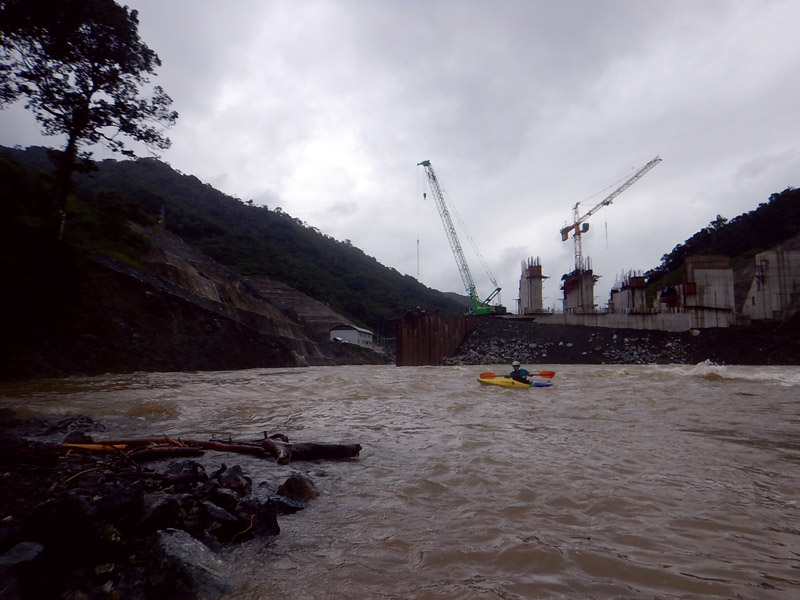
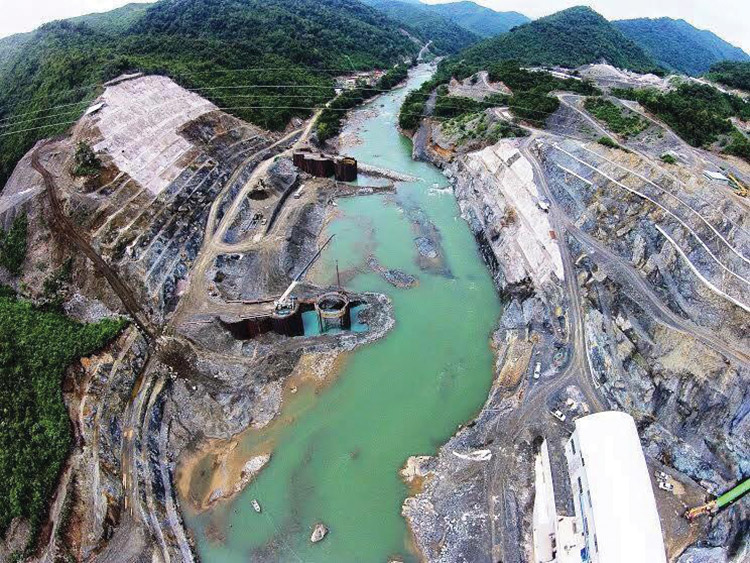
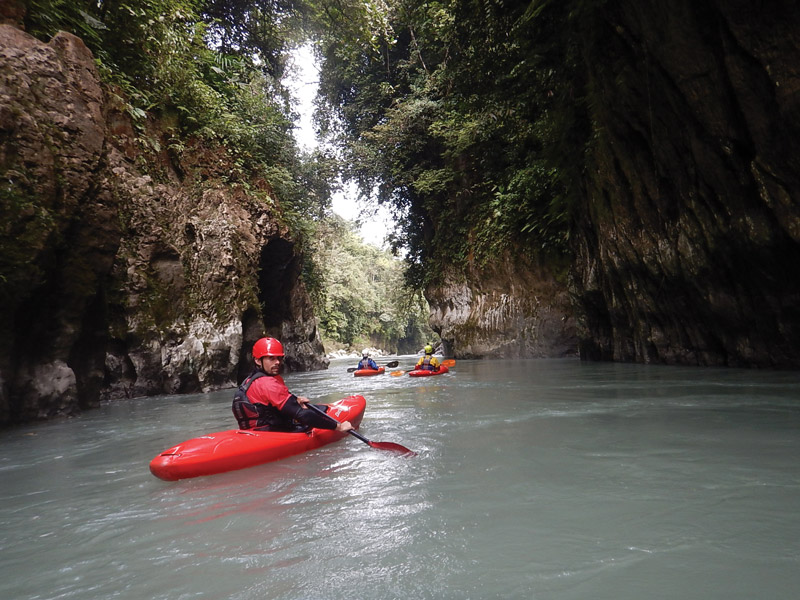
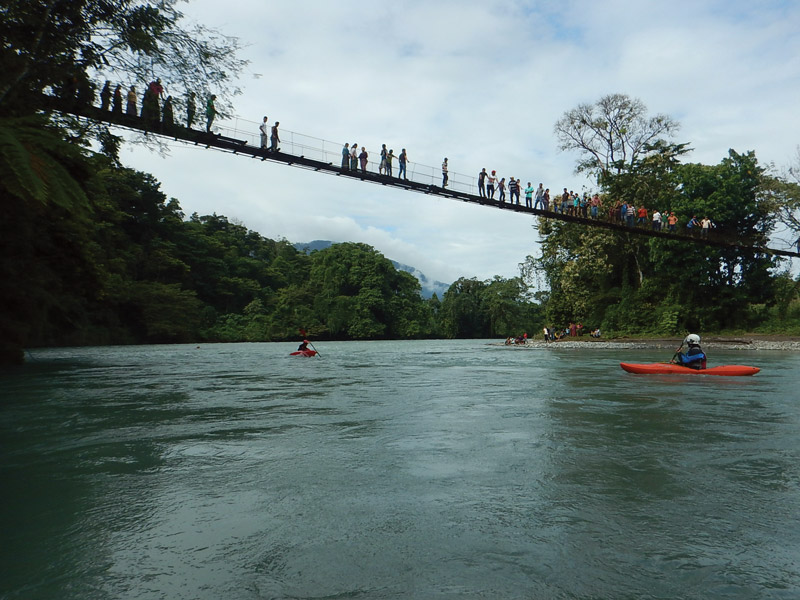
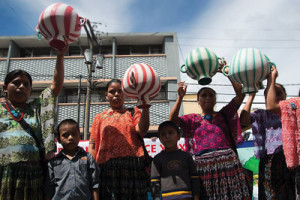
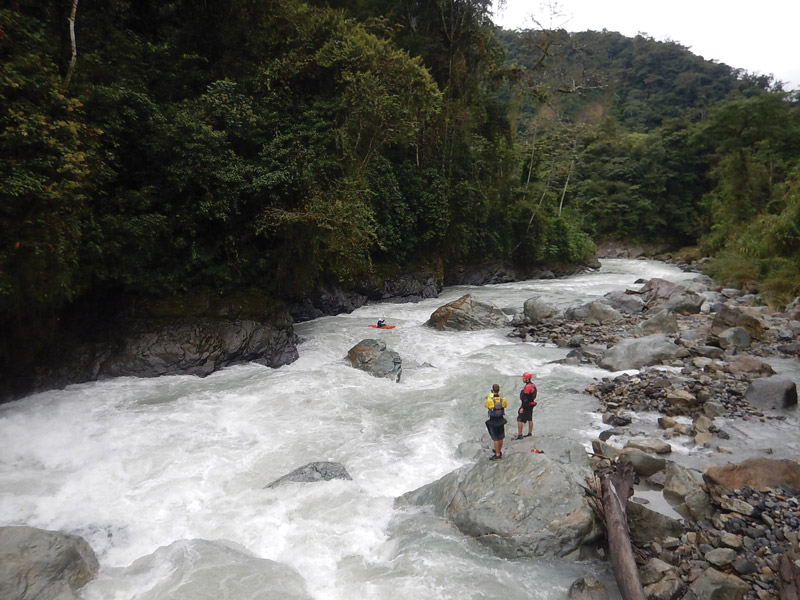
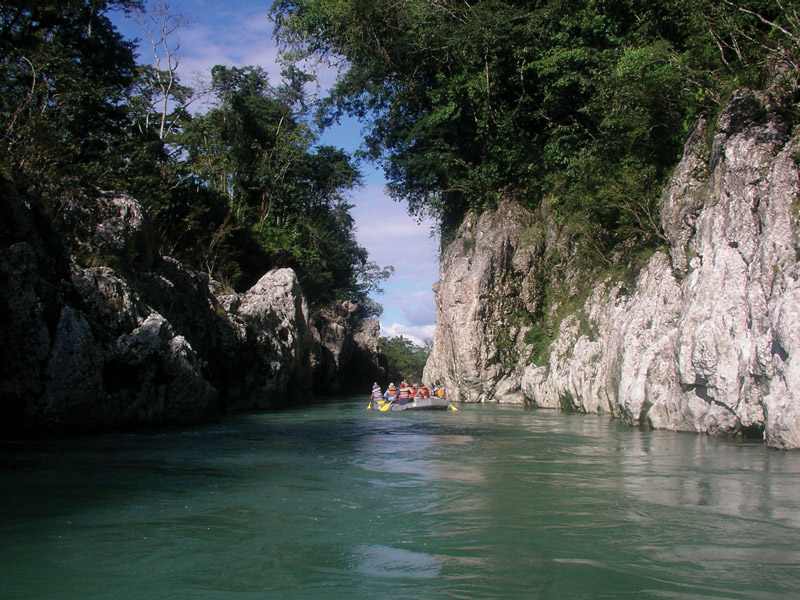
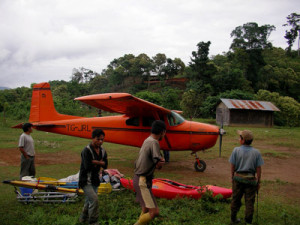
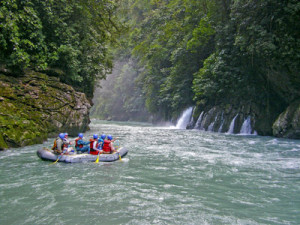
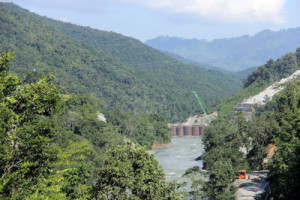
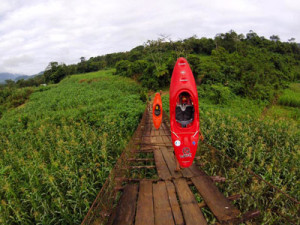
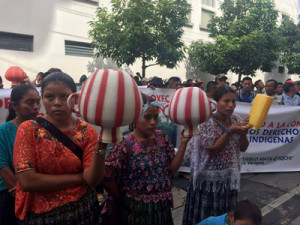
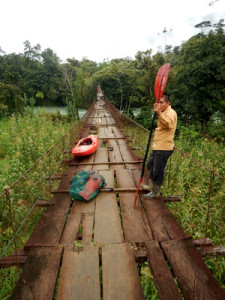
Thank you so much for this inspiring and important story!
Your article on the Guatemalan rivers at risk makes us so sad. Unfortunately some of our Canadian mining companies are operating with total impunity in Guatemala with neither government, so far, accepting any responsibility for the damage they are doing both to human rights and the environment. We have been to Guatemala a number of times and feel a strong bond with it, such a beautiful country. The same thing is happening in Canada as well, and right now one of our most beautiful rivers, the Peace River, is being dammed, destroying what many call the bread basket of BC and drowning many indigenous sites. Like you, many here are working to stop the damage from this kind of project.. & for us, we’re fighting pipelines as well. It all comes down to greed. It’s good to know you’re there pushing back… kindred spirits for sure. We all shouldn’t have to fight like this to save what’s so intrinsically precious – but we will. And we’ll think about the good work you’re doing there.
Is sad to see all those rivers been destroyed by greedy people.
Money is more important for them and our environment has been destroyed by their company.
This article is total BS. Hydroelectric plants are fostering prosperity. Madre selva in any case has manipulated the truth and communities. How van clean energy be an enemy to the environment. Guatemala has the lowest cost of energy, mainly due to the green energy investments made in the past decades, in all of central america! The real problem is the manipulation of communities by madre selva and other organizations mis informing the locals and the international community that hydroelectrc powerplants are a bad thing for the preservation of the environment. IT IS RIDICULOUS! Worst of all, the communities that are against the plants aren’t even affected by them for the most part. Madre selva is promoting chaos and anarchy in our country. Please stop misinforming the international community. Powerplants have funded schools for local communities, protected the jungle from further cutting of trees by designating special protected areas and funded soecial programs to promote responsible and sustainable agriculture by the locals.
Here is a reply from the author — Sounds like this comment was copied right off a company website. The issue of hydroelectric energy is not simple. In some cases it is appropriate. But a private energy sector that runs unfettered with no democratic discussion of the costs and intended use does not serve the country. What I and Madre Selva hope for in every case, for a start, is the informed consultation of the local population and a complete and rigorous study of the environmental impacts, as prescribed by law. So far it is just a hope.
About time theRevue stopped being a collection of ads for gringo economic migrants’ shops and tours and started addressing very real issues affecting all those who call Guatemala home whether by choice or by birth. Now, while not a newspaper in the regular sense, you’re the de facto English language main publication in the country. Thus, you could address many other issues such as inequality in education, systemic gender barriers and the kleptocratic practices of some Guatemalans who still view the country as their plantation. Nevertheless, this is an excellent piece so far as it goes.
I appreciate you (Guatemala isstilladictorship) for your comments however I do take exception to your judgment on the Revue content. We founded the magazine with the idea that we wanted to create a fair-priced vehicle that supports businesses in Guatemala, actually, the percentage of Guatemalan owned businesses outweighs your so called “gringo economic migrants’ shops). In terms of content, we are foreign nationals so in our minds we felt that we could best serve Guatemala by pointing out all that is good about this country. We had confidence that there were and still are professional journalists out there who can dig for the truth, who can uncover facts, who understand this very complicated country and its peoples far better than we can. And, do we think that what we might publish re: corruption, impunity, racism, et al would have even a tiny impact on solving these many injustices? Of course not. Who are we to tell Guatemalans what they already know? Who are we to think that we can uncover or otherwise point out to a larger world what’s wrong with Guatemala? We know who we are, we know what we can and can not do. Our energies are spent to accentuate positive energy, to empower to the extent we are able for the good of Guatemala. So why did we publish Rivers at Risk by Greg Schwendinger? Because of exactly what you said, “it’s an excellent piece … ” Water rights affect the entire world, not just Guatemala.
Your “foreign nationals” line is irrelevant. You make a living in the country, you own a business, have family ties and on and on. You are part of the society regardless of your self-perceptions. And yes, some of you are gringo economic migrants though for some mental gymnastics reason you don’t own up to your status. And if you think your gringo privilege doesn’t give you a clearer and better perch from which to address Guatemalan socioeconomic issues then you’re next in line to acquire the rights to Niagara Falls. TheRevue’s masthead clearly states its start date: 1992. If memory serves, that was in the thick of the Civil War. You can’t it have both ways; you can’t choose to substract yourselves from the society that feeds you and puts a roof over your head while at the same time present yourselves as some kind of purveyors of Guatemala as an all inclusive fantasy for the enjoyment of those who have profited and continue to profit from the huge disparities your adopted country is prone to. I’m not suggesting you assume the mantle of journalistic standards or that TheRevue becomes a beacon of public opinion. I’m suggesting that it’s about time you started to address significant issues affecting your country of residence. I’m also suggesting you need to stop hiding behind your semi outsider status and become a better witness to your surroundings. If water rights are a worldwide concern, the same can be said about hunger, lack of opportunity and systemic prejudice. Guatemala has plenty of those and then some. You’re on the right track and it’s time to step up your game. And I’d be more than willing to lend a hand if you need help getting there.